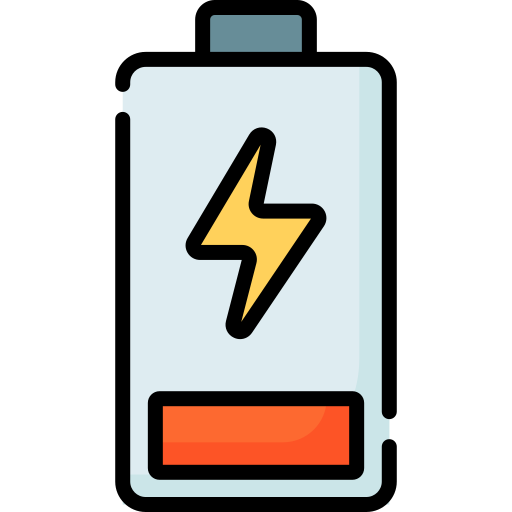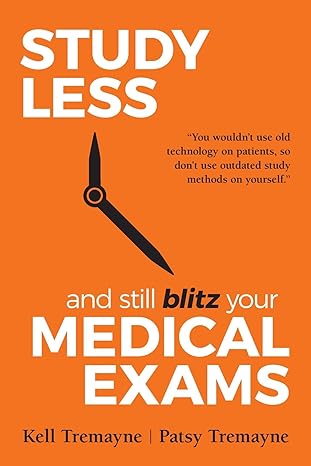- Home
- Create a Study Schedule
How to Create a Study Schedule for Doctors Studying for Exams
Many junior doctors believe that the key to exam success is to study at every available moment. But this often leads to exhaustion, poor retention, and burnout. The truth is, how to create a study schedule that works for you is just as important as how much time you spend studying.
Creating a study schedule isn’t about rigid timetables or unrealistic expectations. It’s about building a sustainable rhythm that protects your energy, prioritises high-value tasks, and gives you back a sense of control.
The Problem with "Whenever You Can"
Studying “whenever you can” usually means studying when you’re tired, distracted, or emotionally drained. This leads to:
- Inconsistent effort
- Poor retention
- Guilt during downtime
- Burnout before the exam
This reactive approach is common—but not effective. Many doctors who fail their exams aren’t lazy or unmotivated. They’re simply overwhelmed and studying inefficiently.
What Effective Scheduling Looks Like
If you want to know how to create a study schedule that actually helps, focus on these qualities:
 Predictable You know when you’re studying and when you’re not. |
 Flexible You know when you’re studying and when you’re not. |
 Focused It prioritizes high-yield topics and weak areas. |
 Balanced It includes time for rest, exercise, and relationships. |
The goal isn’t to fill every spare moment with study—it’s to make the time you do study count.
Core Principles of Smart Scheduling
1. Protect Your Mornings
Why it matters:
Your brain is most alert and capable of deep focus in the morning, especially after a good night’s sleep. This is the best time to tackle challenging material or practice high-yield questions.
How to apply it:
- Reserve mornings on your days off for active learning (e.g. MCQs, case-based questions, new topics).
- Avoid passive tasks like re-reading notes or watching videos during this time. Here are some ways to adopt an active recall strategy.
- Start with the hardest or least enjoyable topic to build momentum.
Pro tip:
Use the first 2 hours of your day for your most important study task. Even if the rest of the day gets disrupted, you’ve already made progress.
2. Use Time Blocks, Not To-Do Lists
Why it matters:
To-do lists can be overwhelming and vague. Time blocking turns intentions into action by assigning specific tasks to specific times.
How to apply it:
- Instead of writing “study pathology,” block out 9:00–10:30 AM for “Pathology MCQs + review errors.”
- Use calendar apps to visually map your study blocks.
- Include buffer time between blocks to avoid spillover and stress.
- Consider using deliberate practice in these blocks.
Pro tip:
Treat study blocks like appointments. If something interrupts them, reschedule—don’t cancel.
3. Schedule Recovery
Why it matters:
Rest isn’t a luxury—it’s a cognitive tool. Breaks help consolidate memory, reduce stress, and improve long-term retention.
How to apply it:
- Use the Pomodoro technique: 50 minutes of study followed by a 10-minute break.
- Plan full afternoons or evenings off each week to recharge.
- Include active recovery like walking, stretching, or social time.
Pro tip:
Recovery time is part of your study strategy. Protect it as fiercely as your study blocks.
4. Plan Around Your Life, Not Against It
Why it matters:
Unrealistic schedules lead to guilt and inconsistency. A schedule that fits your real life is more likely to be followed—and more effective.
How to apply it:
- Identify your non-negotiables (e.g. shifts, family time, sleep).
- Build your study blocks around these, not in conflict with them.
- Accept that some days will have less study—and that’s okay.
Pro tip:
Flexibility is a strength, not a weakness. A schedule that adapts is a schedule that lasts.
Real-World Examples
Christine’s Story
Christine was juggling full-time work, night shifts, a baby, and upcoming exams. She felt guilty whenever she wasn’t studying. After creating a structured schedule with fixed study blocks on her days off, she felt more present with her family—and more confident in her study.
“It’s so good to have a plan.”
Eddie's Story
Eddie had failed twice. He was studying constantly but retaining little. After switching to shorter, focused morning sessions and taking afternoons off, his mood improved, his memory improved—and he passed.
How to Create a Study Schedule: A Step-by-Step Guide for Doctors
Creating a study schedule isn’t just about fitting study into your week—it’s about building a personalised system that aligns with your lifestyle, protects your energy, and maximises retention. To do this effectively, follow these six practical steps to design a schedule that works for you.
 Step 1: Audit Your Time and Energy |
 Step 2: Define Your Study Goals |
 Step 3: Block Your Study Time |
 Step 4: Build in Recovery and Flexibility |
 Step 5: Use a Weekly Template |
 Step 6: Track Progress and Adjust |
Step 1: Audit Your Time and Energy
Before you plan anything, understand your current commitments and energy patterns.
- List fixed commitments: Include shifts, family time, sleep, exercise, and commute.
- Identify high-energy windows: When do you feel most alert? For many, it’s mornings on days off.
- Spot low-energy periods: Use these for passive tasks like reviewing notes or watching videos.
Tip: Use a weekly calendar to visually map your time.
Step 2: Define Your Study Goals
Set clear, achievable goals for each week.
- Choose 2–3 priority topics: Focus on high-yield areas or weak spots.
- Decide how you’ll study: MCQs, flashcards, short answers, group discussions.
- Set outcome goals: e.g. “Complete 100 cardiology MCQs and review errors.”
- Consider using spaced repetition to achieve these goals.
Tip: Align goals with your exam blueprint or syllabus.
Step 3: Block Your Study Time
Use time blocking to turn intentions into action.
- Assign specific tasks to specific times: e.g. “Tuesday 9–10 AM: Renal Physiology MCQs.”
- Include buffer time: Allow for delays or transitions.
- Balance intensity: Mix deep study with lighter review sessions.
Tip: Use Google Calendar or Outlook to schedule blocks like appointments.
Step 4: Build in Recovery and Flexibility
Avoid burnout by planning rest and adapting to real life.
- Short breaks: Every 50 minutes, take a 10-minute break.
- Longer breaks: Schedule full afternoons or evenings off weekly.
- Flexible blocks: Have backup slots in case something changes.
Tip: Treat rest as a non-negotiable part of your study strategy.
Step 5: Use a Weekly Template
Here’s a sample structure adapted for full-time doctors:
| Day | Morning (6–8 AM) | Afternoon (Work) | Evening (7–9 PM) |
|---|---|---|---|
| Monday | Quick review + MCQs | Work | Study (new topic) |
| Tuesday | Flashcards / spaced recall | Work | Rest or light review |
| Wednesday | Study (weak area) | Work | MCQs + error review |
| Thursday | Short answers practice | Work | Group study or review |
| Friday | Review + planning | Work | Rest or catch-up |
| Saturday | Study (new topic) | Practice questions | Rest or social time |
| Sunday | Review + flashcards | Exercise + rest | Prep for the week |
🧩 Tip: Use early mornings and evenings for focused study, and protect weekends for deeper learning and recovery. Adjust based on your shift patterns and energy levels.
Step 6: Track Progress and Adjust
Your schedule should evolve as your needs change.
- Review weekly: What worked? What didn’t?
- Adjust goals: Increase or decrease intensity based on progress.
- Celebrate wins: Acknowledge completed blocks and milestones.
Tip: Use Notion, Trello, or a planner to track topics and progress.
Some Mistakes to Avoid
- Overloading your schedule: More hours (and cramming) ≠ more learning.
- Ignoring rest: Burnout kills memory and motivation.
- Being too rigid: Life happens. Adapt, don’t abandon.
- Studying only what you like: Prioritize weak areas and high-yield topics.
What Can You Do Right Now
|
Tools that Can Help
|
Final thoughts
Creating a study schedule isn’t about achieving perfection—it’s about building momentum. The goal isn’t to study every hour of every day, but to make the hours you do study truly count. A well-designed schedule helps you study smarter, not harder. It brings structure to your week, clarity to your goals, and confidence to your preparation.
Importantly, a good schedule also makes space for the rest of your life. It acknowledges that you’re not just a doctor-in-training—you’re a person with relationships, responsibilities, and a need for rest. When your study plan respects your energy and your reality, it becomes sustainable. And sustainability is what leads to success.
So if you’re feeling overwhelmed, start small. Block out one study session. Choose one topic. Build from there. Progress is built one block at a time—and every block brings you closer to your goal.
You’ve got this. And your schedule can help you get there.






